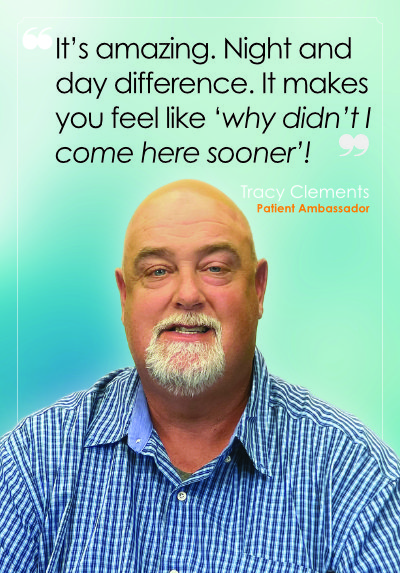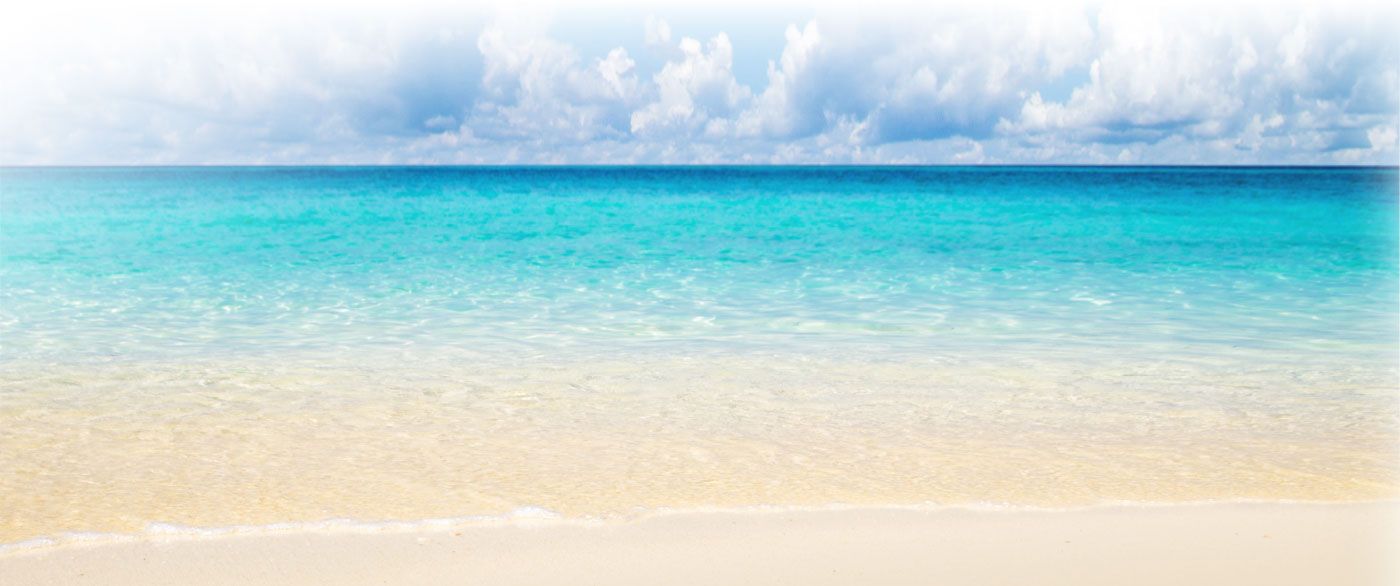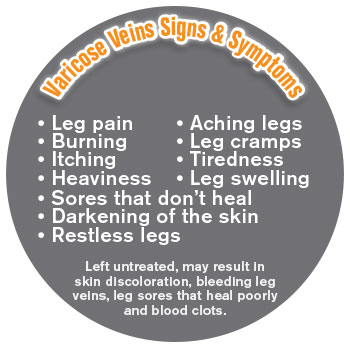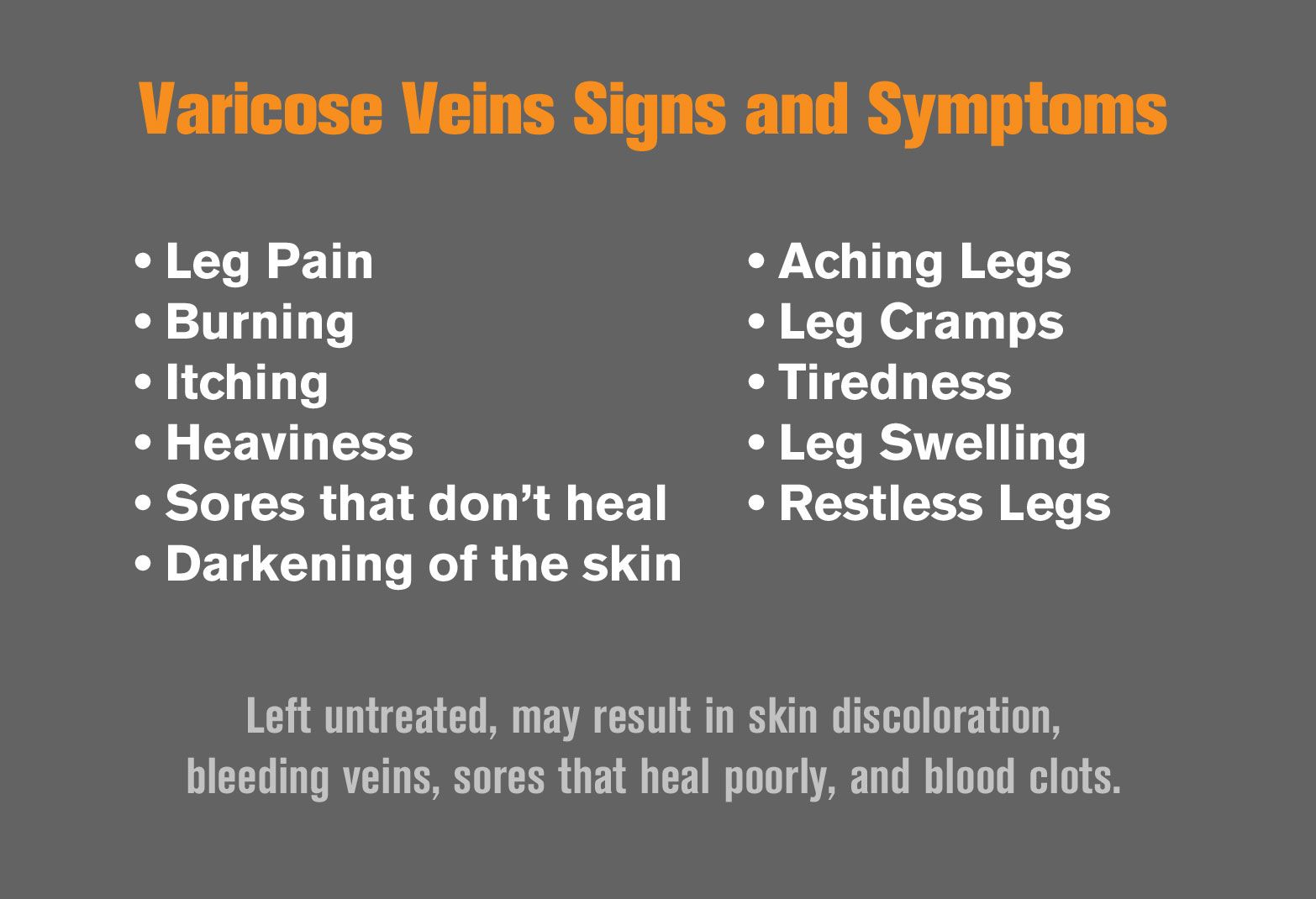 My name is Tracy Clements and I’m from around here, about 30 minutes from here. I suffered several injuries from a car accident years ago, and I recently found out about this place [Alsara Vein Clinic], and I wanted to come here and see oof they could help.
My name is Tracy Clements and I’m from around here, about 30 minutes from here. I suffered several injuries from a car accident years ago, and I recently found out about this place [Alsara Vein Clinic], and I wanted to come here and see oof they could help.
What were your symptoms? How did they affect your daily life?
I was having CVI (Chronic Venous Insufficiency), swelling of the legs, heaviness of my foot and my lower leg, and a lot of tiredness, heaviness, but also ulcers and skin breakdown. Actually, I was having these pains and these symptoms for years and years, and I neglected to treat it or take care of it because I thought that was the way it was suppose to be and that was just something I was going to have to deal with because of the care accident I was in. My car accident was in 1993 – twenty-eight years ago.
But, my Primary Care… after several bouts with Cellulitis and trying to fight it off with antibiotics, we were having some success, but we continued to revert back to the Cellulitis two [or] three times-a-year.
How did you hear about Alsara Vein Clinic?
And that’s when she recommended that I come to see Dr. Gupta at Alsara Vein Clinic, and she thought that would be a much safer and reliable source for more of a permanent fix on my leg. And I followed her advice and came in for a [free] consultation.
What was your first impression of Alsara Vein Clinic?
I was extremely impressed with not only the staff but Dr. Gupta, himself, was very knowledgeable and patient with me. And they let me know that there could be a lot of relief and [that] there was help. And that made me feel just great about coming here.
How did you feel during the treatment?
I was, um… during the treatment – the mapping and the treatments – they were almost pain-free for me. And I have a unique situation with my leg versus a lot of people: I’ve had a lot of broken bones and hardware put in my body and my veins are really messed up. And it wasn’t near as scary or painful as I thought it would be, so it worked out really well.
What are you able to do after treatment that you couldn’t do before?
The leg swelling has minimized almost… probably 90%. I’m not having the breakdown that I did with my skin, or the ulcers. And I’m also… the heaviness of my legs, the Restless Leg Syndrome does not bother me anymore. And my legs before coming here were so sensitive and sore, just the slightest touch would hurt – and, now, they’re not like that at all. It’s gone. It’s amazing. It really is.
How would you describe Dr. Gupta?
Dr. Gupta: his way of handling a patient is amazing. He has knowledge beyond what I… and I’ve been around a lot of doctors and a lot of medical stuff in the last twenty-eight and a half years, and by far he is one that is… he’s incredibly intelligent but he’s patient, and he goes the extra effort to explain things to you. And he will lay it out for you before they do anything, you know, and it’s just amazing the results you get from it. He makes you feel comfortable, and, he doesn’t make you feel comfortable; you are comfortable with that. We did the VenaSeal™ – the glue – in my [veins], and I recommend it. It’s literally painless, and it’s helped out; it’s helped me tremendously. I would recommend the VenaSeal™ and I would recommend Dr. Gupta and Alsara Vein Clinic 100%.
How was your insurance coverage?
I had no insurance issues at all. It was covered 100%. And I was informed early on – my first visit – that the staff here would work to utilize my insurance and let me know if there were any problems before we went any further, and, if they could, make accommodations as to help however they could with the insurance.
What was your impression of the staff at Alsara Vein Clinic?
From the first moment I arrived here at the facility and you walked in the door, I felt the staff was very accommodating, very friendly. The place is amazingly clean and comfortable, and it’s very user-friendly here. You feel right at home. And it’s not crowded. And you don’t feel like a number here – you feel like a person here. And I think that’s very important to people that are already coming in here nervous, and uninformed, and unaware of what’s going to happen, and that all disappears pretty much at the front door when you come in.
How did you feel after your treatment?
After treatment, I feel… I’m pretty much pain-free when I leave here. And from then on, I mean, it’s amazing – it’s night-and-day difference, it really is. It makes you feel like ‘Why didn’t I come here before? Why did I wait so long to come here?’ There is help out there, and don’t wait.
Would you recommend Alsara Vein Clinic to family or friends?
I would definitely recommend someone to this facility, to Alsara Vein Clinic. I have, actually, recommended a couple of people, and I hope they don’t wait, like I did. Pain is a serious problem, and it doesn’t have to be. We can make it go away, and that’s what you guys do.





 My name is Tracy Clements and I’m from around here, about 30 minutes from here. I suffered several injuries from a car accident years ago, and I recently found out about this place [Alsara Vein Clinic], and I wanted to come here and see oof they could help.
My name is Tracy Clements and I’m from around here, about 30 minutes from here. I suffered several injuries from a car accident years ago, and I recently found out about this place [Alsara Vein Clinic], and I wanted to come here and see oof they could help.
 When your heart beats, it pumps blood through arteries to every part of your body carrying oxygen and essential nutrients. Since you have a limited amount of blood (about 5 liters in an adult), the deoxygenated blood returns to the heart via countless veins in your body. The veins in your legs are farthest from the heart and must work against gravity to push blood back to the heart. Compounded by other risk factors, some veins wear out over time and become “varicose”. The pooling of blood in varicose veins may cause symptoms such as heaviness, tiredness, itching, burning, cramping, restlessness and pain. Left untreated, the increased pressure of blood in the leg veins can leak out, causing problems such as edema, skin discoloration, sores in legs that heal poorly, and frequent skin infections. This condition is called Chronic Venous Insufficiency (CVI).
When your heart beats, it pumps blood through arteries to every part of your body carrying oxygen and essential nutrients. Since you have a limited amount of blood (about 5 liters in an adult), the deoxygenated blood returns to the heart via countless veins in your body. The veins in your legs are farthest from the heart and must work against gravity to push blood back to the heart. Compounded by other risk factors, some veins wear out over time and become “varicose”. The pooling of blood in varicose veins may cause symptoms such as heaviness, tiredness, itching, burning, cramping, restlessness and pain. Left untreated, the increased pressure of blood in the leg veins can leak out, causing problems such as edema, skin discoloration, sores in legs that heal poorly, and frequent skin infections. This condition is called Chronic Venous Insufficiency (CVI).

 Make sure you wear clothes that won’t trap heat. Always use sunblock (SPF 30 or above) not just on your legs, but also on your face and nose, where thinner skin is more prone to developing spider veins.
Make sure you wear clothes that won’t trap heat. Always use sunblock (SPF 30 or above) not just on your legs, but also on your face and nose, where thinner skin is more prone to developing spider veins.
